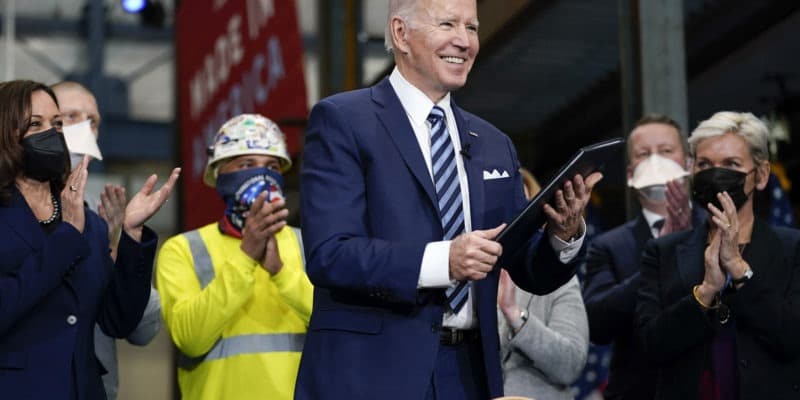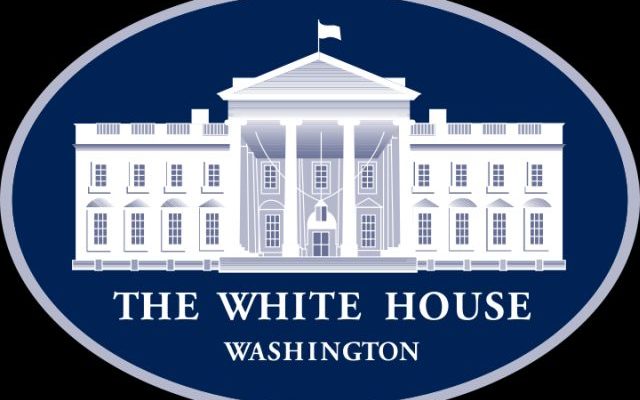The White House – Briefing Room
July 12, 2022
Vice President Kamala Harris to deliver remarks at White House Summit and reinforce call for state and local leaders to invest American Rescue Plan funds to help more Americans secure good-paying jobs
On Wednesday, the White House will announce that over $40 Billion in American Rescue Plan funds have been committed to strengthening and expanding our workforce. White House officials will highlight top American Rescue Plan workforce best practices from Governors, Mayors, and County Leaders across the country, and call on more government officials and private sector leaders to expand investments in our workforce. Vice President Kamala Harris will deliver remarks kicking off a half-day White House Summit. Since passage of the law, states, localities, community colleges, and local organizations have leveraged American Rescue Plan resources to deliver training, expand career paths, encourage more Registered Apprenticeships, provide retention and hiring bonuses in critical industries, and power efforts to help underserved Americans and those who face barriers to employment secure good jobs. These investments in the workforce – along with the American Rescue Plan’s direct payroll support that has saved or restored jobs across a broad set of industries – have contributed to a record 9 Million jobs added since President Biden took office in the fastest and strongest jobs recovery in American history.
The half-day White House Summit on the American Rescue Plan and the Workforce will feature remarks by Vice President Harris and Secretary of Labor Marty Walsh, a session on state American Rescue Plan workforce investments with North Carolina Governor Roy Cooper and Pennsylvania Governor Tom Wolf, as well as panels with Mayors, County Leaders, and Labor and Community Leaders on their model American Rescue Plan workforce programs. The Summit will focus on three major areas of American Rescue Plan investment:
1. Building a Diverse and Skilled Infrastructure Workforce: President Biden and Vice President Harris have launched the Administration’s Infrastructure Talent Pipeline Challenge to encourage immediate partnerships by the public and private sectors to ensure we have the diverse and strong workforce needed to help rebuild our infrastructure and supply chains here at home with the Bipartisan Infrastructure Law. Today’s session will focus on innovative programs to meet this challenge like the DC Infrastructure Academy, with a special focus on Pre-Apprenticeship programs funded by the American Rescue Plan. Pre-Apprenticeship programs play a critical role in diversifying the talent pipeline by training, placing, and retaining workers through Registered Apprenticeships – which the North America’s Building Trades Unions (NABTU) has cited as having a return on investment for employers of as much as $3 for every $1 invested. …
2. Strengthening Our Care and Public Health Workforce: The pandemic exposed the fragility and importance of our care economy. As part of an unprecedented commitment to a stronger care workforce, the American Rescue Plan contains significant investments in public health and the care economy that will help provide better pay and career opportunities for care workers and make it easier for workers with child and elder care responsibilities to join and stay in the workforce. U.S. prime-age labor force participation has fallen behind that of its competitors, in part due to lack of family friendly policies. Studies show that access to care can be an important determinant of whether workers are able to join or remain in the labor force. Millions of families rely on paid child and elder care to work, while millions more struggle to afford or find available care. The demand for child and elder care remains high and will only grow, with a projected need for over a million additional home health care workers over the next decade. Studies have shown that quality pathways for nursing aides leads to better outcomes for patients and workers. The American Rescue Plan is helping deliver supports for quality pathways for these essential jobs. …
3. Expanding Access to the Workforce for Underserved Populations: American Rescue Plan funds are being used to recruit more Americans facing barriers to employment – homelessness, disability, prior criminal justice involvement – and giving them pathways into the workforce. More than 600,000 people leave prison every year and confront significant challenges in accessing and sustaining stable, meaningful employment – a 2018 study estimated that formerly incarcerated individuals experience an unemployment rate of over 27 percent, exponentially higher than the overall national unemployment rate. Investments in expanding access to the workforce strengthen our economy by increasing labor force participation and tapping into the potential of more Americans, and research shows that certain programs – such as comprehensive reentry programs and summer youth employment programs – can significantly reduce crime. …





